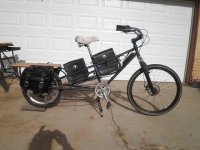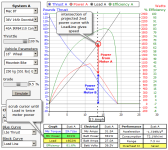Hugh-Jassman
1 kW
- Joined
- Jun 20, 2015
- Messages
- 407
https://endless-sphere.com/forums/viewtopic.phpf=1&t=97335&p=1425730#p1425730
Now several months later after finnishing my bike and testing my Ah usage with a CycleAnalyst I have to tell the next person searching for this info that a heavy cycletruck needs a very large battery! I have been using more than 50Wh per mile at a very slow speed. I don't like moving so slow, but I have no choice be cause it takes 6Ah to make a round trip to town without climbing any of our steep hills or hauling much cargo. After the first trip to town when I ran out of power a mile from home and I had to pedal with my arthritic knees.
I put a higher gear for the 3% grade into town and use the lowest gear for the steep hills. I need to build a 36Ah LiFePO4 pack. If you have a cycletruck, you need a minimum of 20Ah even if you can pedal most fo the time. And be aware that you can use only half of the capacity if you want the battery to last the longest posible time. That would be an 80% charge and 30% cut off. And that does not tell about the discharge C rate, nor ageing.

I have put too much thought into how to build one the best way for living on steep terrain (9% average). But I am still looking for the best example. I maybe the only one thinking about how bad transportation is going to get.
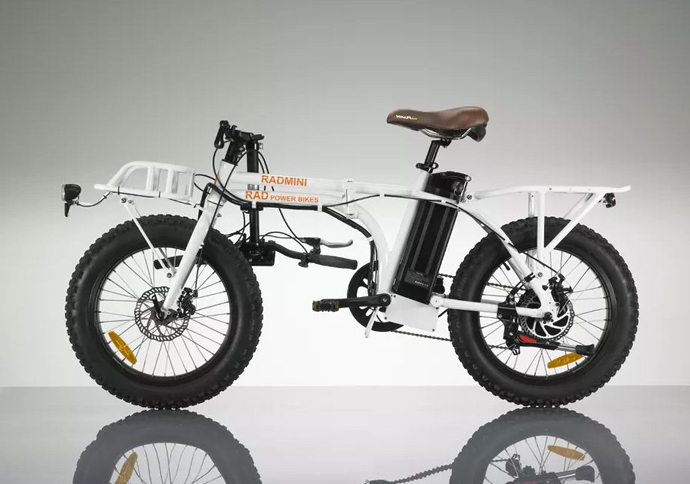
Living in the state of Washington I am restricted to a 1000w out put motor. And for 450 to 600lbs total combined weight, that is almost impossible. I figure I will need at least a 13:1 gear reduction ratio...for a 12-14 mph maximum.
And I believe that new motor technology is still going to be needed. Like vector control. What else?
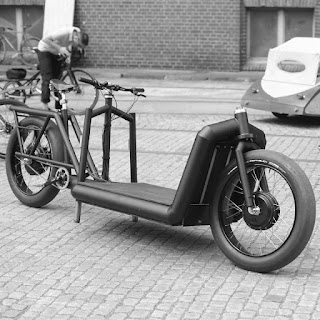
https://www.facebook.com/AnywhereBerlin/?ref=br_rs
I found these guys that built a very heavy-duty frame, but then used a pair of hub motors. Totally not street legal in my state.
Is there a vector controlled hub motor that would do the job with only one?? I doubt it. But then maybe I could use just a controller with a smaller three phase motor, assuming I could find one.
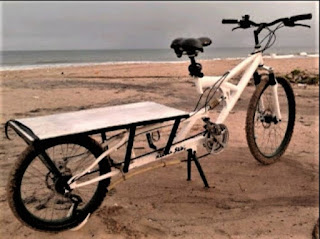
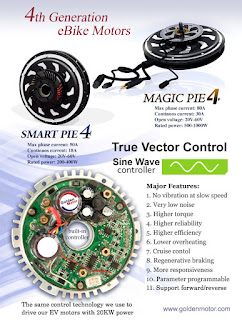
Now several months later after finnishing my bike and testing my Ah usage with a CycleAnalyst I have to tell the next person searching for this info that a heavy cycletruck needs a very large battery! I have been using more than 50Wh per mile at a very slow speed. I don't like moving so slow, but I have no choice be cause it takes 6Ah to make a round trip to town without climbing any of our steep hills or hauling much cargo. After the first trip to town when I ran out of power a mile from home and I had to pedal with my arthritic knees.
I put a higher gear for the 3% grade into town and use the lowest gear for the steep hills. I need to build a 36Ah LiFePO4 pack. If you have a cycletruck, you need a minimum of 20Ah even if you can pedal most fo the time. And be aware that you can use only half of the capacity if you want the battery to last the longest posible time. That would be an 80% charge and 30% cut off. And that does not tell about the discharge C rate, nor ageing.

I have put too much thought into how to build one the best way for living on steep terrain (9% average). But I am still looking for the best example. I maybe the only one thinking about how bad transportation is going to get.

Living in the state of Washington I am restricted to a 1000w out put motor. And for 450 to 600lbs total combined weight, that is almost impossible. I figure I will need at least a 13:1 gear reduction ratio...for a 12-14 mph maximum.
And I believe that new motor technology is still going to be needed. Like vector control. What else?

https://www.facebook.com/AnywhereBerlin/?ref=br_rs
I found these guys that built a very heavy-duty frame, but then used a pair of hub motors. Totally not street legal in my state.
Is there a vector controlled hub motor that would do the job with only one?? I doubt it. But then maybe I could use just a controller with a smaller three phase motor, assuming I could find one.



